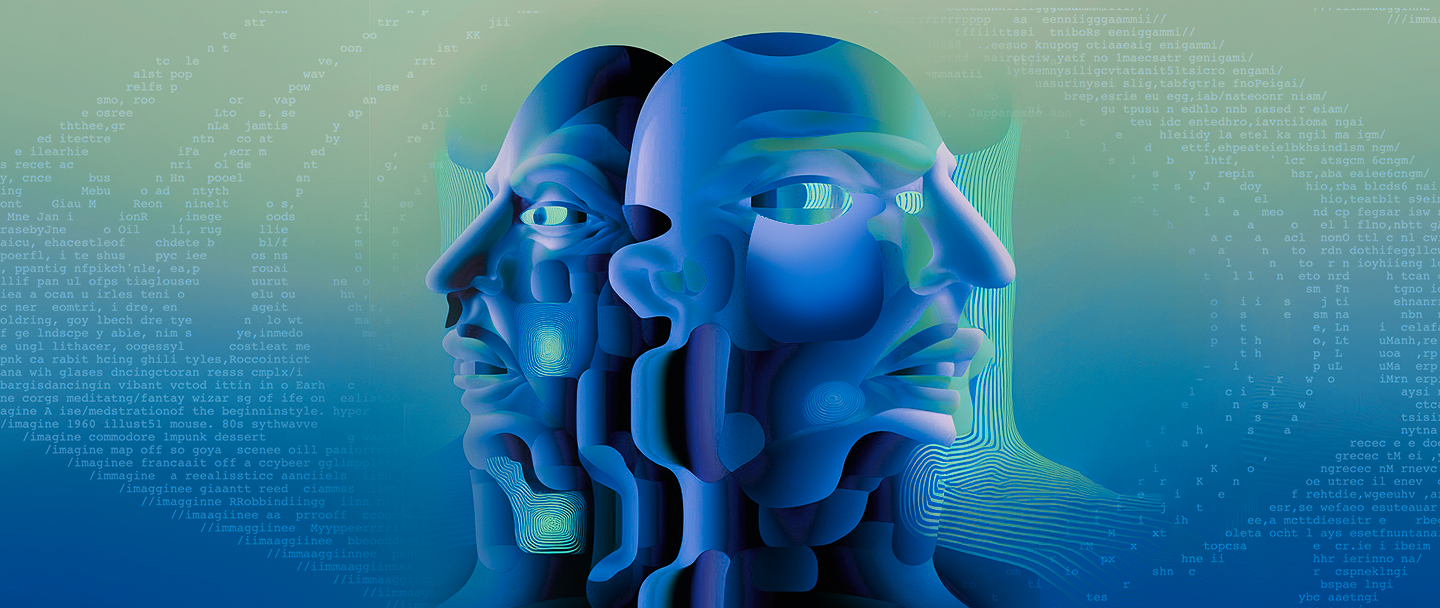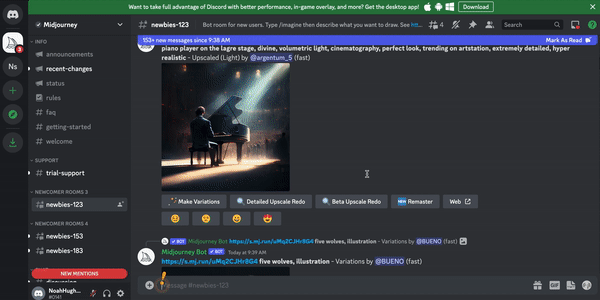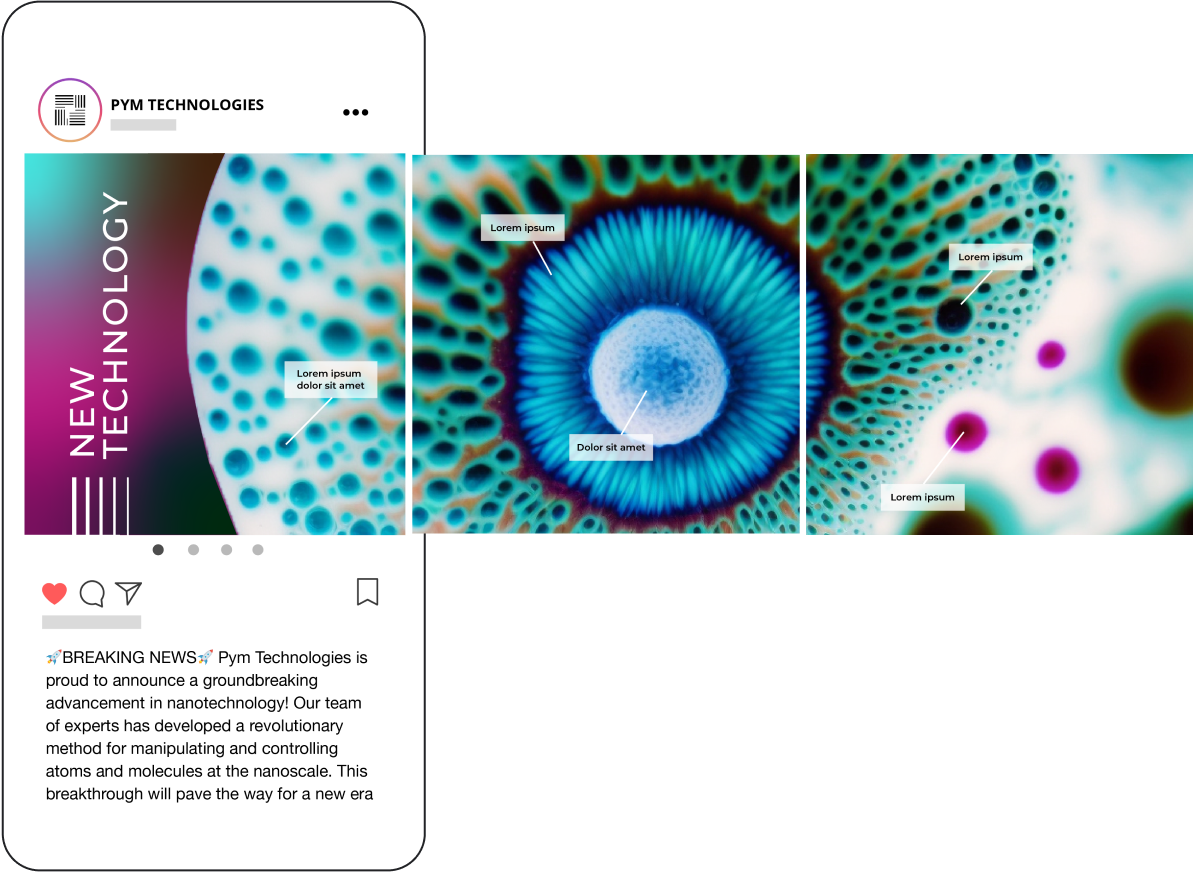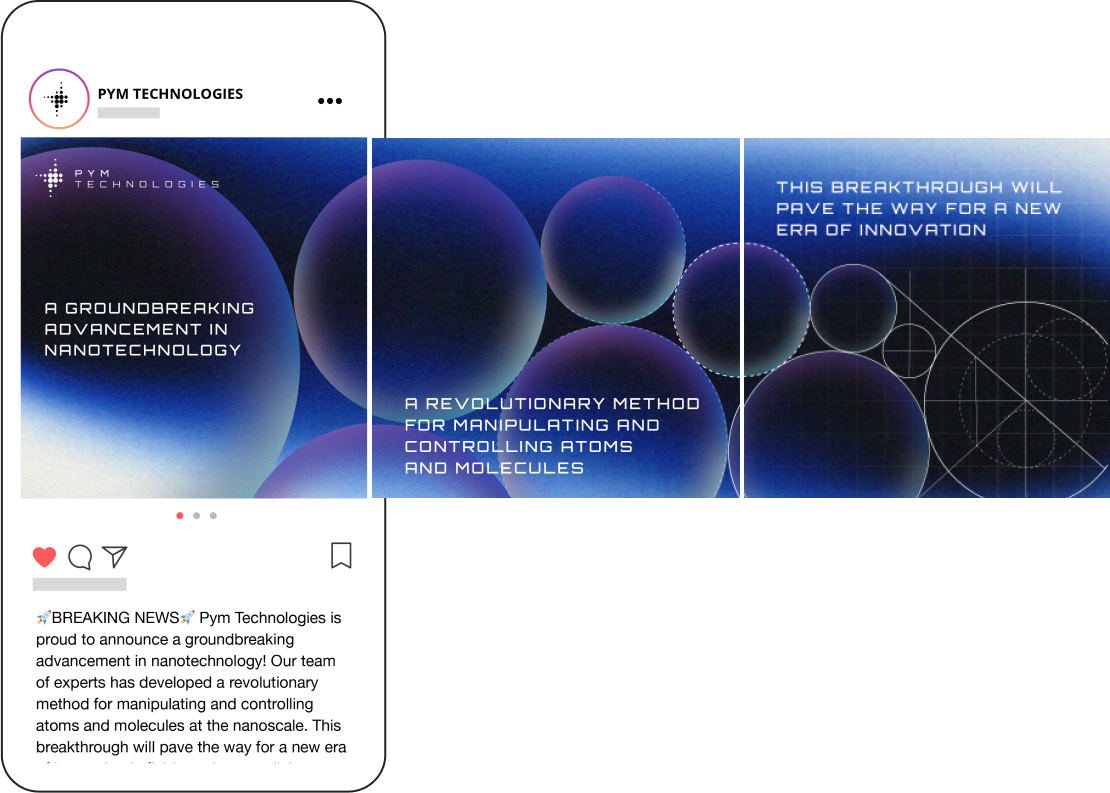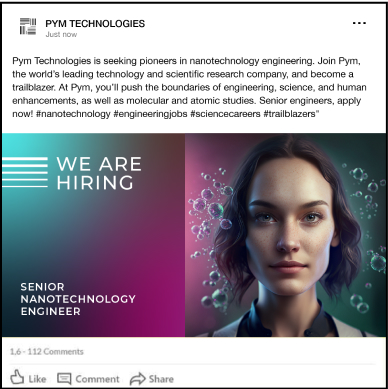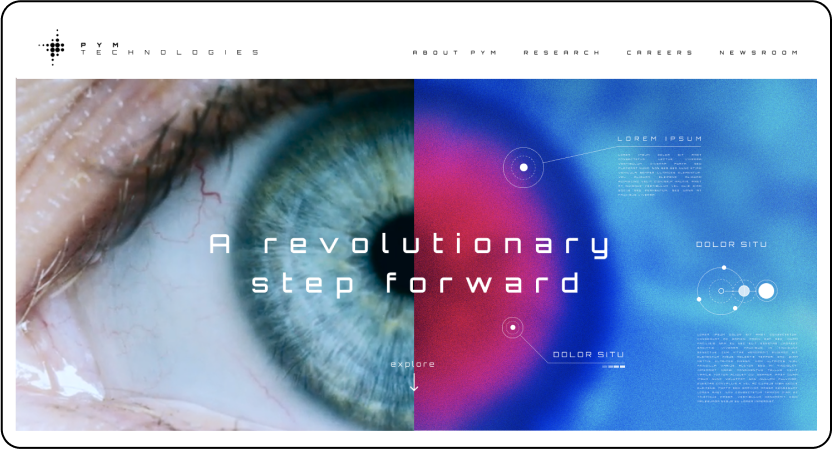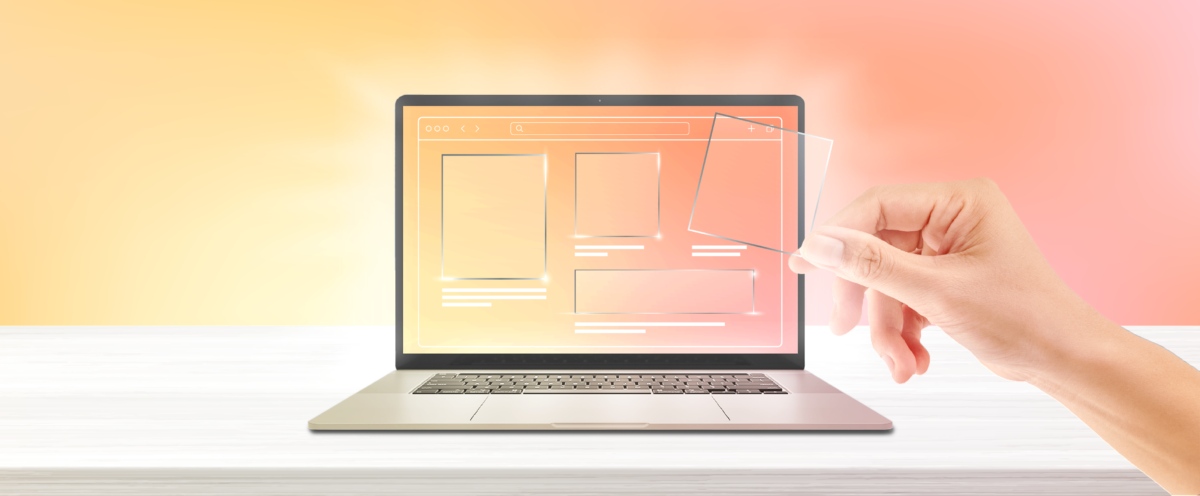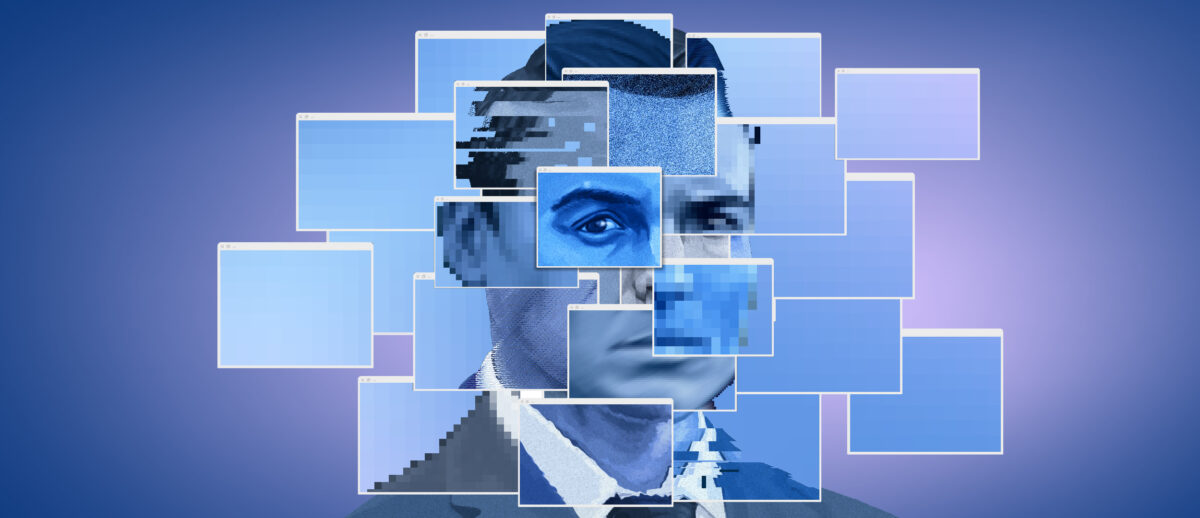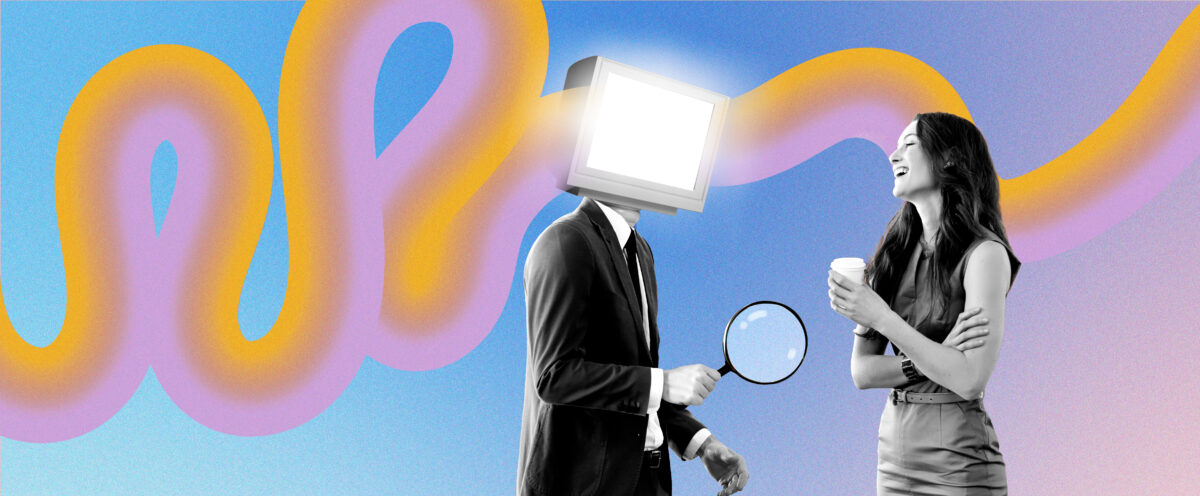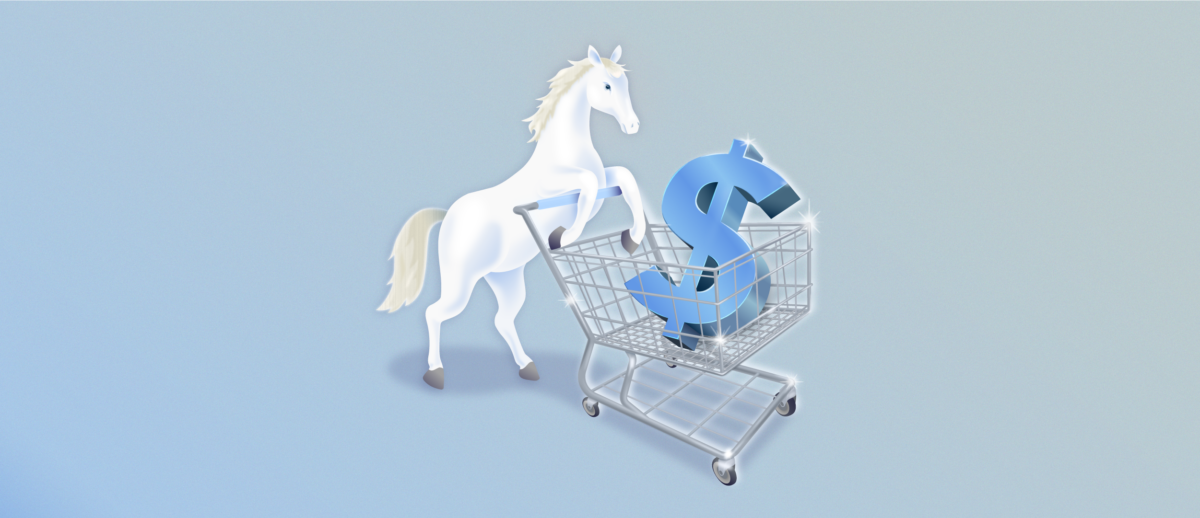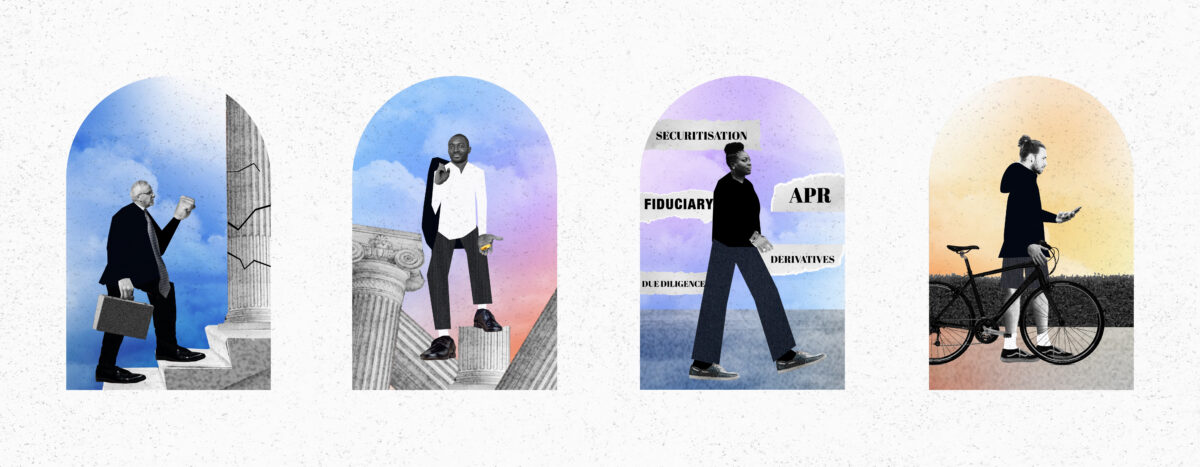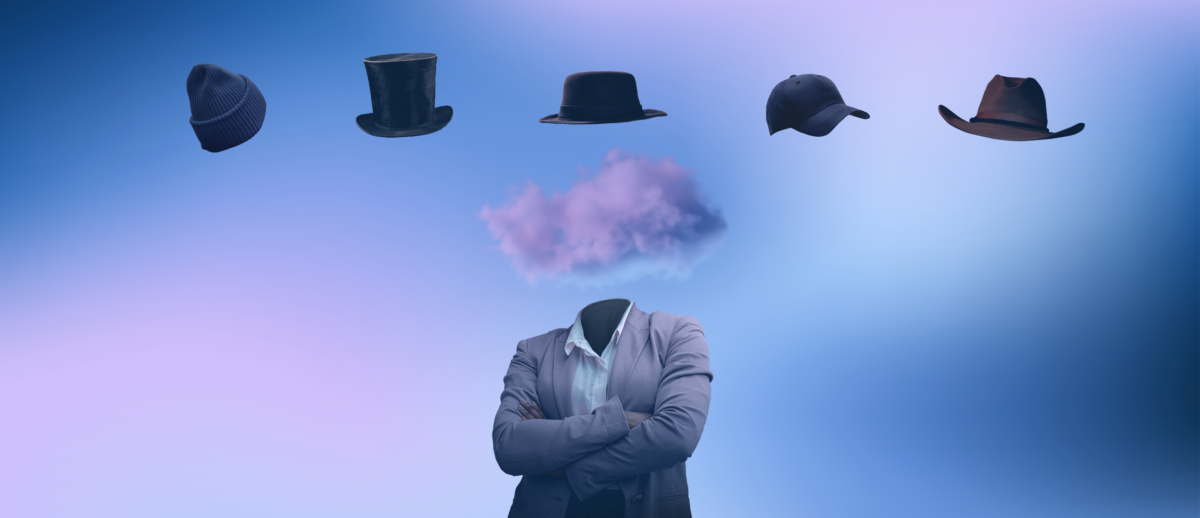Jessica: I didn’t know anything about this fake company, Pym, but if you know the tech industry, you know the logos tend to be simple and abstract. I started with straightforward prompts on Dall-E 2 (e.g., “logo science,” “quantum fields,” “technology”) and soon learned a few things: 1) the images all came out really bad, 2) these bots don't do well with typography, and 3) image generators can create variations on an image—in theory, you can “build” on an idea, but that’s not really how it played out.
Midjourney was very different from Dalle, and much more powerful. Whereas Dalle created simple, flat logos, Midjourney defaulted to a steampunk Star Wars aesthetic.
- Jessica
With Midjourney, there are all sorts of codes. Like when you want to put greater weight on a part of your prompt, you might add “::2” of “::5” to that section in your prompt—the higher the number, the greater emphasis. You can also add “in the style of [insert artist name]” to the prompt. So, I tried that and finally felt like I had a breakthrough on Midjourney. The designs were much closer to what I wanted, so I picked my favorite and moved on to the next two assignments—the Instagram and LinkedIn assets.
